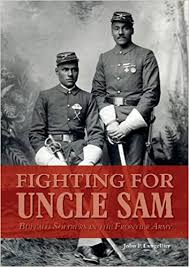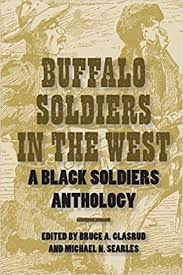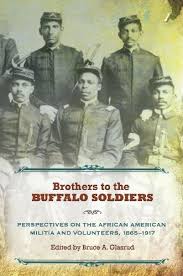Black History Month 2021 - Dudley Knox Library
Black History Month
Buffalo Soldiers
1866-1951
The Buffalo Soldiers were Black members of a number of units (9th Cavalry Regiment, 10th Cavalry Regiment, 24th Infantry Regiment, 25th Infantry Regiment, and the Second 38th Infantry Regiment) serving from 1868 until the 1948 order to integrate the US military. The last units of Buffalo Soldiers to see combat (in Korea) were disbanded in 1951.
Buffalo Soldiers served in nearly every military action from the Indian Wars to the Korean War. They also guarded some of the first National Parks to be established.
Members of the original Buffalo Soldiers received numerous Medals of Honor for their valiant service.
Corporal Freddie Stowers
1918 Medal of Honor Citation:
Cpl. Stowers, distinguished himself by exceptional heroism on September 28, 1918 while serving as a squad leader in Company C, 371st Infantry Regiment, 93d Infantry Division. His company was the lead company during the attack on Hill 188, Champagne Marne Sector, France, during World War I. A few minutes after the attack began, the enemy ceased firing and began climbing up onto the parapets of the trenches, holding up their arms as if wishing to surrender. The enemy's actions caused the American forces to cease fire and to come out into the open. As the company started forward and when within about 100 meters of the trench line, the enemy jumped back into their trenches and greeted Corporal Stowers' company with interlocking bands of machine-gun fire and mortar fire causing well over fifty percent casualties. Faced with incredible enemy resistance, Cpl. Stowers took charge, setting such a courageous example of personal bravery and leadership that he inspired his men to follow him in the attack. With extraordinary heroism and complete disregard of personal danger under devastating fire, he crawled forward leading his squad toward an enemy machine-gun nest, which was causing heavy casualties to his company. After fierce fighting, the machine-gun position was destroyed and the enemy soldiers were killed. Displaying great courage and intrepidity Cpl. Stowers continued to press the attack against a determined enemy. While crawling forward and urging his men to continue the attack on a second trench line, he was gravely wounded by machine-gun fire. Although Cpl. Stowers was mortally wounded, he pressed forward, urging on the members of his squad, until he died. Inspired by the heroism and display of bravery of Cpl. Stowers, his company continued the attack against incredible odds, contributing to the capture of Hill 188 and causing heavy enemy casualties. Cpl. Stowers' conspicuous gallantry, extraordinary heroism, and supreme devotion to his men were well above and beyond the call of duty, follow the finest traditions of military service, and reflect the utmost credit on him and the United States Army.
Nolan Self (1918-2016), a Buffalo soldier who served in the 9th and 10th Cavalry at the turn of WWII recounts his life changing experiences coming into and serving in the military in this biographical documentary. This film is a rare chance to experience what life was like as a Buffalo Soldier during the transitioning years from horse cavalries.
Video courtesy of Kansas State University College of Education.
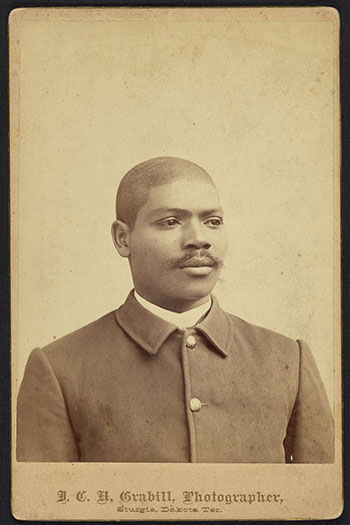
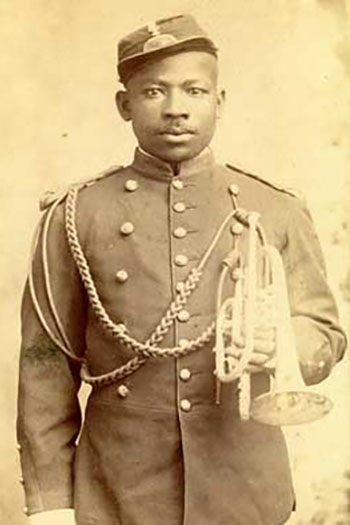
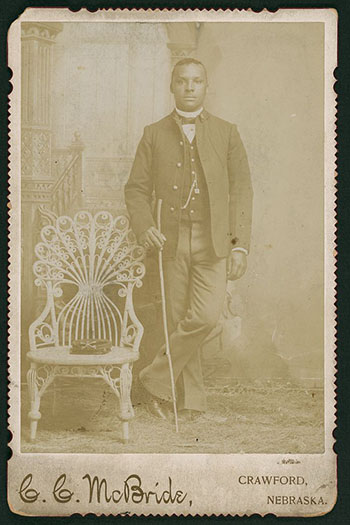
Medals of Honor
Sergeant Major Edward L. Baker, Jr
1898 Citation:
The President of the United States of America, in the name of Congress, takes pleasure in presenting the Medal of Honor to Sergeant Major Edward Lee Baker, Jr., United States Army, for extraordinary heroism on 1 July 1898, while serving with 10th U.S. Cavalry, in action at Santiago, Cuba. Sergeant Major Baker left cover and, under fire, rescued a wounded comrade from drowning.
Private Dennis Bell
1898 Citation:
Voluntarily went ashore in the face of the enemy and aided in the rescue of his wounded comrades; this after several previous attempts at rescue had been frustrated.
Sergeant Benjamin Brown
1889 Citation:
Although shot in the abdomen, in a fight between a paymaster's escort and robbers, did not leave the field until again wounded through both arms.
Sergeant John Denny
1879 Citation
Removed a wounded comrade, under a heavy fire, to a place of safety.
Private Pompey Factor
1875 Citation:
With 3 other men, he participated in a charge against 25 hostiles while on a scouting patrol.
Corporal Clinton Greaves
1879 Citation:
While part of a small detachment to persuade a band of renegade Apache Indians to surrender, his group was surrounded. Cpl. Greaves in the center of the savage hand-to-hand fighting, managed to shoot and bash a gap through the swarming Apaches, permitting his companions to break free.
Sergeant Henry Johnson
1879 Citation:
Voluntarily left fortified shelter and under heavy fire at close range made the rounds of the pits to instruct the guards, fought his way to the creek and back to bring water to the wounded.
Sergeant George Jordan
1881 Citation:
While commanding a detachment of 25 men at Fort Tularosa, N. Mex., repulsed a force of more than 100 Indians. At Carrizo Canyon, N . Mex., while commanding the right of a detachment of 19 men, on 12 August 1881, he stubbornly held his ground in an extremely exposed position and gallantly forced back a much superior number of the enemy, preventing them from surrounding the command.
Private Fitz Lee
1898 Citation:
After a force had succeeded in landing and had been compelled to withdraw to the boats, leaving a number of killed and wounded ashore, he voluntarily went ashore in the face of the enemy and aided in the rescue of his wounded comrades who would otherwise have fallen into the hands of the enemy, this after several previous attempts had been frustrated.
Corporal Isaiah Mays
1889 Citation:
Gallantry in the fight between Paymaster Wham's escort and robbers. Mays walked and crawled 2 miles to a ranch for help.
Lieutenant William McBryar
1890 Citation:
Distinguished himself for coolness, bravery and marksmanship while his troop was in pursuit of hostile Apache Indians.
Sergeant Thomas Shaw
1881 Citation
Forced the enemy back after stubbornly holding his ground in an extremely exposed position and prevented the enemy's superior numbers from surrounding his command.
Private William H. Thompkins
1899 Citation:
After a force had succeeded in landing and had been compelled to withdraw to the boats, leaving a number of killed and wounded ashore, he voluntarily went ashore in the face of the enemy and aided in the rescue of his wounded comrades who would otherwise have fallen into the hands of the enemy, this after several previous attempts had been frustrated.
Private George Henry Wanton
1898 Citation:
Voluntarily went ashore in the face of the enemy and aided in the rescue of his wounded comrades; this after several previous attempts at rescue had been frustrated.
First Sergeant Moses Williams
1881 Citation:
Rallied a detachment, skillfully conducted a running flight of 3 or 4 hours, and by his coolness, bravery, and unflinching devotion to duty in standing by his commanding officer in an exposed position under a heavy fire from a large party of Indians saved the lives of at least 3 of his comrades.
Corporal William Othello Wilson
1890 Citation:
Bravery.
A more detailed citation was published in General Order 100, on December 17, 1891:
December 30, 1890. Private (then Corporal) William O. Wilson, Troop I, 9th Cavalry: For gallantry in carrying a message for assistance through country occupied by the enemy, when the wagon train under escort of Captain Loud was attacked by hostile Sioux Indians, near the Pine Ridge Agency, South Dakota.
Photos this page via Library of Congress.

